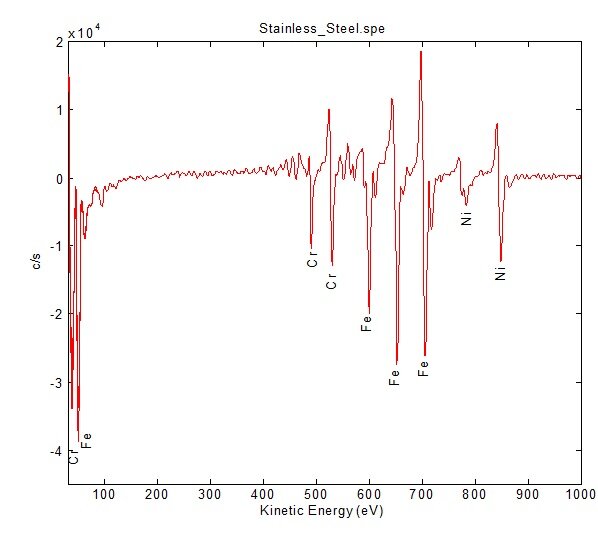Auger Electron Spectroscopy (AES)
In Auger Electron Spectroscopy (AES), a surface is bombarded with fast electrons (keV energy range) or X-rays to remove core electrons and then observe the decay of the resulting core holes via Auger processes. The kinetic energies of Auger electrons are highly specific for each kind of atom. Therefore, an analysis of the encountered kinetic energies of Auger electrons allows to draw conclusions about the elements present on a surface. The Auger effect is the predominant core-hole decay mechanism for light elements. After the initial creation of the core hole, electrons from higher shells in the ion can occupy this core hole. The released energy can leave the ion in form of a photon. Alternatively, the energy can also be transferred to yet another electron in the vicinity, giving it enough energy to leave the ion, creating a two-fold charged final state. The escaped electron is known as Auger electron and its kinetic energy can be measured e.g. with hemispherical electron energy analysers or retarding field analysers.

